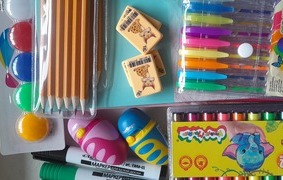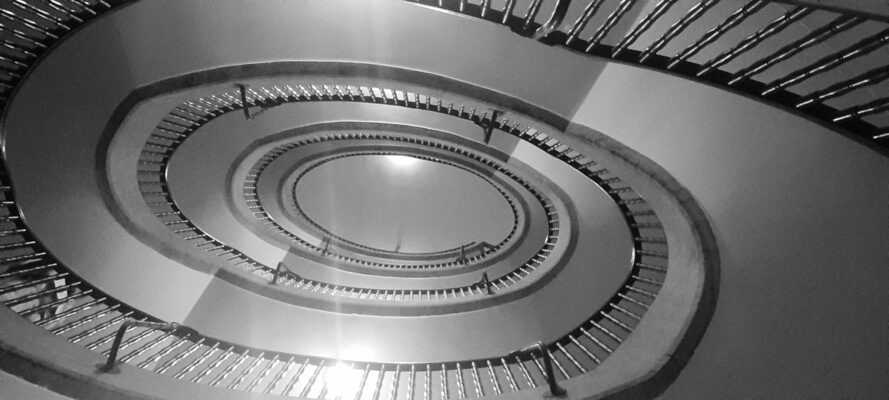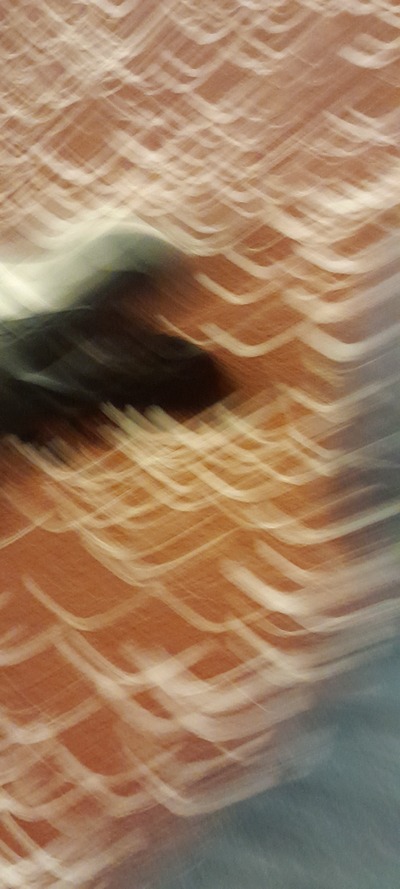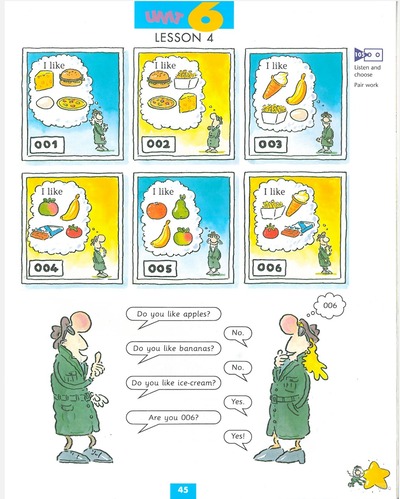(Notes from the Back to School September 2023 webinar at BKC Moscow)

The aims?
Since I believe in leading by example, also here I decided to verbalise the aims for this webinar and for this post. I knew that I would have a mixed-ability audience, with some experienced and some less experienced teachers who might have or might have not used stories in their lessons. For that reason, I chose two main aims for this session:
- For those teachers who have little or no experience with storytelling in the classroom (or little or no love for storytelling in the classroom): to provide the basic tools that will help them get started
- For those teachers who already have a lot of experience with storytelling in the classroom (or a lot of love for storytelling): to bring in a new angle which will help to reinforce this love
What is a story and why we even bother
A structure of a story it is super simple. Rob Bisenbach calls it a three-legged stool here, since there are always characters who have a goal they try to reach and, on the way there, they encounter some obstacles or get over some challenges or, basically, who have some adventures. Everything else is an added value, like a set of blocks that you can add, take away or rearrange. I like this approach to and it does help me with preparing the materials for my students.
The best thing is that our life, our private life, our non-teaching life, is all built around stories. We read, watch and listen to stories in form of books, audiobooks and films and series. We tell stories of what happened to us at work, at school or just something that we witnessed on the metro or in the street. We tell stories to share our feelings, to make people smile, to make the little people fall asleep or to eat lunch. If we look for even a wider context, our family’s history is a story, our nation’s history is a story, everything that we read about on the news, the serious bits and the less serious bits, everything is a story.
No wonder then something that is such an important part of our life made its way into the EFL classroom, for children and for adults. Two years ago I gave myself a task of counting all the reasons that there might be to bring a story into the kids’ classroom and, based on what I could get my hands on in 2021, I found as many as 50, some related to child development, some related to teaching foreign languages. You can find this post here. I do recommend!
Different types of stories and their advantages (and all the tricky bits)
Coursebook stories: This is the place to start from all the teachers who have not worked much with storytelling with young learners. From the point of view of the leaners, these stories are easily availalbe, they often include the favourite characters who the kids can follow throughout the entire year and the language in terms of structures and lexis is carefully chosen and consistent with the material covered in each unit. On the other hand, these stories are also very teacher-friendly because they come with a set of instructions and ideas. Even if they are not ideal, they are a great starting point for adaptation and development. Our coursebooks also provide for a good variety of stories. Superminds from CUP for example include the following: cartoons (print and video versions), action stories for the younger kids and real, extensive reading stories for the more advanced primary school kids.
Traditional stories: They are a little bit more challenging, for both parties but they also have a lot of advantages. In many ways, these stories are already available to our students. It is quite likely that they have already heard them, watched them or read them in their L1 as the Little Red Riding Hood, the Enormous Turnip or Jack and the Beanstalk are a part of the world culture and bringing them into the lesson, in a different language version will be welcomed with joy. However, the beautiful and rich language, that is the main benefit of using these stories is also the biggest challenge in the context of the EFL or ESL young learners. More often than not, children would have to rely on their memories as a lot of the story will not be available to them. Consequently, these stories require more adaptation and grading and, in general, more work since these stories are not accompanied by ‘How to’ manuals and teacher’s books.
Phonics stories: This is another type of a story that was created not for the second/ foreign language learner but simply for a child learning to read. The language of these stories, although very often simplified and handpicked, focused on certain sounds and phonics, might still be beyond a regular young learner beginner learner. However, the teachers still use them because of their potential for the literacy skills’ development although it means more work and more careful lesson planning and staging on the part of the teacher.
Storybooks: There are many advantages of using storybooks with YL. These are the real stories, written for children and their plot is not limited by the set of the words that need to be introduced in unit 5, which, unfortunately, often makes the story very educational and, consequently, very boring. Storybooks are far from this danger zone. They use beautiful language, great characters and fantastic illustrations which can help develop not only the children’s language but also their visual literacy and literary tastes. It is true that, again, a lot of work might be required to adapt the langauge and the plot to make it available for our EFL/ESL students. Not to mention that the handouts and teachers’ books don’t exist, either so teachers are basically on their own. However, as a teacher who had an opportunity to see the long-term impact of these stories being present in the YL classroom, I can say that it is absolutely worth it.
There are some earlier posts on using storybooks in the EFL classroom and you can find them here
- My favourite storybooks to have in the classroom, Top 10
- Choosing a storybook for your EFL classroom, My experience
- Where to get started with storybooks, my own manual
Videos: That is an interesting resource that was not available to us in the past and that has definitely blossomed since the time of the pandemic. There are certain limitations regarding the language, the support for the teacher but it is a resource that is readily available for the teachers and for the students and their parents and that is almost unlimited. Teachers often like to use Peppa (that most kids are familiar with), Pete the Cat or the Little Princess. I have so far committed only one post on Peppa and you can find it here.
YLE Cambridge
If the fact that stories are everpresent in our life is one important reason to bring stories into our lesson, then the Young Learners Exams are another. All of the modern coursebooks are aligned with the YLE skills and requirements, they offer skills development in the format of the exam and even if we do not prepare our students for taking the exams we will be developing their language skills in some connection with the papers format.
The exams themselves were introduced in 1997 and since then, as a conference presenter, a teacher, a trainer and a manager, I have often come across comments (doubts, inquiries or even accusations) that the exams were introduced for purely mercenary reasons and that children should not be exposed to any formal assessment at that age.
For me, personally, the main benefit of the YLE Cambridge is the research that was done and has been done in order to find out what being a young language learner is about and how chilren’s language skills can be tested in an appropriate way. And it was done not in connection with a group of students from only one L1 background but around the world which means that by analysing a lot of date, the L1-influence can be taken out of equation, helping us understand how children learn. Here is only one number for you: the initial versions of the tests were trialled on a group of 5000 children from Europe, South America and South-East Asia. If you are interested, please have a look at the Research Notes published by Cambridge online in February 2002.
Stories feature in three exams, starting from a very simple picture-based reading and writing task for Starters, through Movers, up to Flyers, with a real extensive reading and a reading comprehension task, a writing and a telling of a story based on a set of visuals. The storytelling tasks are included in the KET writing task.
The language
This is, by far, the most important reasons to use stories in the classroom: the language.
In order to tell a story, the students need to be able to operate quite a few structures such as the present or past tenses, adjectives, emotion adjectives, adverbs, linking words, time and sequence words, sensory words as well as the functional language in the dialogue. This means that the students need to possess all these skills to tell a story which, in turns, means that for quite a long time, for some of the levels, the students will not be able to do it. Or will they?
I do believe (and I will try to prove it:-) that storytelling is not only the aim in itself, it can also be an approach, and these structures can be introduced in order to enable the students to participate in storytelling as soon as it is possible.
For example, as regards adjectives, according to curriculum, the beginner students are not required to know any, apart from a few basic ones. The real adjectives input is scheduled for the A1 level (Movers) when the kids encounter comparatives and superlatives for the first time, although adjectives are around us and the meaning can be easily presented and practised because they are representational.
Far from being a call to action to change the curriulum, it is possible to introduce a lot of this language much earlier, in a way that is appropriate for young language learners.
I have already written about something that I called The Storytelling Campaign. You can read about it here: Introduction and here: Activities. Below, you will find the ideas as I presented them in our webinar.

Introducing adjectives: emotions and not only
These are very easy to introduce. With our pre-school and primary school students, we start with the basic set of happy, sad, angry but then, as we go through the year, more and more adjectives are added. The photos that you can see here illustrate the set of adjectives that I use with my online YL and a set of homemade flashcards for our pre-primary. This second photo was taken in December, after only three months of classes with my youngest pre-primary and at the time they already knew all these 12 adjectives only because we started each lesson with talking about how we feel.
The other source of language as regards adjectives are the songs, from Super Simple Songs and other channels on youtube, for example Open Shut Them or As quiet as a mouse.
All of these can be used in the following way:
- talking about how we feel in the beginning of the lesson, it is good for the language, for bonding but also for the teacher to find out how the kids are in class
- this is the langauge that can help to signal problems, when kids are not feeling very well (‘I am sad’, ‘Are you angry?’)
- and it can help sort out other classroom management issues (‘Look, Sasha is sad now. Don’t take her pencils, please’)
- adjectives can be used to make riddles and to express opinion and this way personalise the content
- adjectives can be used in simple Yes No game to describe any picture to prepare the kids for the listening or reading task or to practise vocabulary, for example: ‘The cat is sad. Yes or no? No, the cat is happy’
- and this is exactly the same structure and approach that will be used to describe the pictures that are a part of a story (see: Movers or Flyers)
Here you can read one more post on that: For the love…of adjective!

Introducing verbs and Present Continous
This is another topic that, in my opinion, is not really used to its full potential in our coursebooks. For that reason, I like to introduce games and activities that promote the use of verbs. From the very first lesson we play a movement game (‘Abracadabra, 123 you are (dancing)’ and ‘Everybody is dancing’). I also introduce the verbs through the songs, for example What do you like to do, I like you and Please be quiet, I am trying to sleep. Sometimes I introduce them because of our curriculum, for example the third song here that covers Present Continous and the rooms of the house. Sometimes, they feature in our course just because they are a source of a plethora of verbs and this is how we learn them before Present Simple or Present Continuous make an appearance as per curriculum.
In the classroom, apart from the obvious advantages for classroom and behaviour management, as it is an easy to use stirrer, we can also use these structures to describe any pictures, which, again, is a preparation for storytelling with visuals.

The illustrations above come from the YLE Cambridge sample papers and they can easily be used in class, not only as the actual exam practice activity and not only with the children who are actually preparing for Starters. The story is so obvious and funny (and it includes all there elements of a story mentioned above) and the visuals simple enough for the pre-primary students to use, too. If they are prepared for it and if the activity is properly staged.
In the beginning the teacher is the one to initiate the structure either by making incorrect sentences (Mummy is eating. Yes or No) or by proving the sentence starters (Mummy is…) but, with time, the kids get more and more independence and skills. Actually, this activity can start wtih kids looking only at one picture before they are shown the whole sequence. And, bearing in mind that the teacher is the one to select the picture (or pictures) for the activity, it is really easy to choose a particular focus, closely connected to the topic of the lesson, for example talking about toys, talking about clothes, talking about food etc.

A simple story can be created even if only one picture is available, like the one above that also comes from YLE and is, in fact, a reading task, this picture can also become the basis for a story. We can see a beautiful family scene, a Sunday afternoon and everyone is doing something and feeling something. The first step is a simple picture description. The second step is figuring out what all the characters do next. ‘Next, mummy is drinking tea’, ‘Next, daddy is sleeping’ etc and here the kids can become a lot more creative. Naturally, all ideas are good ideas.

One more way of using this approach would be using not the visuals but the sets of words, like the one we have in Movers Reading and Writing part 1 or in Flyers Reading and Writing part 1. The teacher would only need to add some introduction, just like in Movers and Flyers story speaking. Kids need to continue the story and they need to use the words provided. I came up with this idea only while preparing the webinar and I am really looking forward to trialling it out with my students. Above, you can see my example from the webinar.
Introducing linking words
Simple linking words such as ‘because’, ‘and’, ‘but’ and ‘so’ can also be introduced as part of the traditional curriculum for pre-school or primary students.
‘Because’ is the one that we start using in the first half of year 1. It can be included in the hello circle when the students talk about how they are (‘How are you today?’ ‘I am happy’ ‘Because…’) and start giving simple justification for their adjectives. ‘I am happy because it is sunny / because it is Friday / because I have a little homework’. It might happen that the kids will start to answer in their L1 or in a mix of L1 and L2, but it is perfectly fine. First of all, I like to know why my students are happy or sad or angry because it might have an impact on their behaviour in class. Second of all, it helps me to react to their news and to bond.
‘Because’ can also be used while describing pictures or while expressing opinion in a simple way (‘Do you like this story / song / picture?’ ‘Yes, because it is happy / funny / fast etc’)In the beginning, this has to be initiated and supported by the teacher, with the sentence starters or with offering a few options for the answer. It also helps when the teacher acts as a model (‘I am happy because my lunch was yummy’).
‘And‘ is even an easier linker to promote. First of all, it can be demonstrated and supported with gestures (i.e. fingers, to signal more than one element). Second of all, it can be used with any vocabulary, colours, toys, food or emotions (‘I am happy AND beautiful’).
‘But’, by comparison, poses a bigger challenge but it is not impossible. With some of my groups in the past, I used the song already mentioned here (‘What do you like to do’ by Super Simple Song) because its every verse is build around a simple contrast (‘I like dancing BUT I don’t like dancing with a bear’). With some other groups, I started to introduce it with a song, too, ‘Do you like broccoli ice-cream?’, simply by adding ‘but’ for some dramatic effect in-between the lines of the story (‘Do you like ice-cream? Yes, I do’, ‘Do you like broccoli? Yes, I do’ ‘BUT do you like broccoli ice-cream?’) and the kids simply picked up on that.
The most challenging of all of these for my Movers kids turned out to be ‘so‘ as they seemed to confuse it with ‘and’. I haven’t had a chance to implement it in the classroom since it was an idea that came to my during the preparation for this webinar, but this connection could be created in a natural way between ‘I’ve got a stomach ache’ and ‘I don’t eat ice-cream’ or ‘No ice-cream today’ which we use with my pre-primary kids while talking about health and health problems. Again, one more thing to trial and test when I am teaching level 2 of pre-primary again.
As regards the story sequencing linkers such as ‘first’, ‘next’, ‘in the end’, we introduce them through exposure while telling stories based on visuals. It is one more activity that starts with the teacher being responsible for providing those and encouraging the children to follow up with the events of the story.
Staging of the story
One of the biggest challenges that the students face while telling the story is the very genre and the way we tend to present it in class. Very often, children, when they hear the word story, they automatically raise the level of challenge for themselves and they approach the task in a very serious way, hoping to create something that will at least match the creativity and the success of Harry Potter. Which, of course, is not the case. When we start telling stories in class, we are expecting something with a character, a goal and some obstacles, something with a beginning, the middle and the ending and, if we are using the YLE Cambridge materials, something that describes the three or four or five visuals provided.
Our task, as teachers, is to show the students, how this task can be broken in and managed, moving on from a very controlled practice, to freer practice, and, perhaps, eventually, to a very creative story writing or story telling.
Here is one of the approaches that I used in class effectively, based on the Flyers speaking materials.

Step 1: Collecting resources to tell the story in a simple way.
Students can work individually, in pairs or teams. They make a list of all the things they can see in each picture, starting with the basic nouns that can be seen which later can be extended into adjectives, verbs, emotions etc, anything more abstract. Afterwards, the kids, in pairs, describe the pictures (aka tell the story) with all of the words on the list, crossing them out as they use them. This is how we can ensure a good length of a discourse, especially that the teacher will be monitoring the kids as they are creating the list and the teacher can add some of the crucial words if they are missing. The students can exchange their lists and tell the story again, with a different set of words and they can also write the story for homework.

Step 2: Crazy words aka freer practice
This step is a simple development on step 1. The words on the list on the right have been provided by the teacher and, as can be seen, they do not feature in the visuals provided. Since, however, the children already know the story very well, they can be invited to take part in a more creative task. We read the words together with the whole group and I tell them ‘These words are in the story but they are not in the picture’ and we make a few examples together about the first picture, for example: ‘Students are hungry. It is 10 a.m.’, ‘Students are looking at the flowers in the garden’ etc.
Afterwards, children work in pairs and create their own story trying to incorporate all the crazy words.

Step 3: Story and its framework
This is the most creative approach in which the kids use only the general framework of the original story. After the kids tried to tell the story and tried to tell it with a few new details, they have a chance to change as much as they want to within the framwork. I prepare the main events, in the form of questions and we reveal them one by one while the students are working in pairs, thinking and planning their story. Afterwards, we have a big, whole class, storytelling session and it an absolute joy and fun to see in how many versions you can tell the story based with the same building blocks. Here, in the post on the activities in the storytelling campaign, you can find the framework for yet another Flyers story, Charlie and the elephant.
A few bonus ideas
Vyacheslav – about one more, super simple way of setting up a storytelling activity
Big Story Competition – something that we did a few times with my older students
Storytelling noughts and crosses – oh, I can’t tell you how many times we’ve played that one
Storytelling treasure hunt – another fun activity
Paul and his gran – staging the storytelling activity for beginner primary kids
Happy teaching!

















